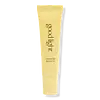What's inside
What's inside
 Key Ingredients
Key Ingredients

 Benefits
Benefits

 Concerns
Concerns

 Ingredients Side-by-side
Ingredients Side-by-side

Octyldodecanol
EmollientIsononyl Isononanoate
EmollientPropylene Glycol Dibenzoate
Skin ConditioningPhenyl Trimethicone
Skin ConditioningBis-Behenyl/Isostearyl/Phytosteryl Dimer Dilinoleyl Dimer Dilinoleate
EmollientEthylcellulose
Synthetic Wax
AbrasiveEthylene/Propylene Copolymer
AbrasivePolymethylsilsesquioxane
Dextrin Palmitate/Ethylhexanoate
EmulsifyingWater
Skin ConditioningLitchi Chinensis Fruit Extract
Skin ConditioningAscorbic Acid
AntioxidantGlycerin
HumectantCopper Tripeptide-1
Skin ConditioningPalmitoyl Pentapeptide-4
Skin ConditioningAcetyl Hexapeptide-8
HumectantPalmitoyl Tripeptide-1
Skin ConditioningCitrus Junos Seed Extract
AntioxidantHelianthus Annuus Seed Oil
EmollientButylene Glycol
HumectantDextrin Palmitate
EmulsifyingSilica Silylate
EmollientPolyglyceryl-3 Polyricinoleate
EmulsifyingSorbitan Sesquioleate
Emulsifying1,2-Hexanediol
Skin ConditioningCaprylyl Glycol
EmollientEthylhexylglycerin
Skin ConditioningDimethicone
EmollientDiisostearyl Malate
EmollientCI 77492
Cosmetic ColorantCaprylic/Capric Triglyceride
MaskingHydrogenated Lecithin
EmulsifyingPolyglyceryl-10 Oleate
Skin ConditioningSodium Ascorbyl Phosphate
AntioxidantCandida Bombicola/Glucose/Methyl Rapeseedate Ferment
AntimicrobialDipropylene Glycol
HumectantCalcium Disodium EDTA
Octyldodecanol, Isononyl Isononanoate, Propylene Glycol Dibenzoate, Phenyl Trimethicone, Bis-Behenyl/Isostearyl/Phytosteryl Dimer Dilinoleyl Dimer Dilinoleate, Ethylcellulose, Synthetic Wax, Ethylene/Propylene Copolymer, Polymethylsilsesquioxane, Dextrin Palmitate/Ethylhexanoate, Water, Litchi Chinensis Fruit Extract, Ascorbic Acid, Glycerin, Copper Tripeptide-1, Palmitoyl Pentapeptide-4, Acetyl Hexapeptide-8, Palmitoyl Tripeptide-1, Citrus Junos Seed Extract, Helianthus Annuus Seed Oil, Butylene Glycol, Dextrin Palmitate, Silica Silylate, Polyglyceryl-3 Polyricinoleate, Sorbitan Sesquioleate, 1,2-Hexanediol, Caprylyl Glycol, Ethylhexylglycerin, Dimethicone, Diisostearyl Malate, CI 77492, Caprylic/Capric Triglyceride, Hydrogenated Lecithin, Polyglyceryl-10 Oleate, Sodium Ascorbyl Phosphate, Candida Bombicola/Glucose/Methyl Rapeseedate Ferment, Dipropylene Glycol, Calcium Disodium EDTA
Polybutene
Hydrogenated Polydecene
EmollientBis-Diglyceryl Polyacyladipate-2
EmollientHydrogenated Styrene/Isoprene Copolymer
Cera Microcristallina
Emulsion StabilisingSilica
AbrasiveRubus Chamaemorus Seed Oil
Skin ConditioningGarcinia Indica Seed Butter
Skin ConditioningEuterpe Oleracea Sterols
Skin ConditioningPalmitoyl Hexapeptide-12
Skin ConditioningPalmitoyl Tripeptide-1
Skin ConditioningTocopheryl Acetate
AntioxidantTocopherol
AntioxidantIrvingia Gabonensis Kernel Butter
Skin ConditioningCitrus Aurantium Dulcis Fruit Extract
MaskingLinoleic Acid
CleansingLinolenic Acid
CleansingOleic Acid
EmollientLactic Acid
BufferingHelianthus Annuus Seed Oil
EmollientCaprylic/Capric Triglyceride
MaskingCopernicia Cerifera Wax
Hydrogenated Coco-Glycerides
EmollientSorbitan Isostearate
EmulsifyingPentaerythrityl Tetraisostearate
EmollientPentaerythrityl Tetra-Di-T-Butyl Hydroxyhydrocinnamate
AntioxidantOctyldodecanol
EmollientEthylhexyl Palmitate
EmollientDicalcium Phosphate
AbrasiveTribehenin
EmollientPropylene Carbonate
SolventStearalkonium Hectorite
Gel FormingParfum
MaskingCitral
PerfumingLimonene
PerfumingLinalool
PerfumingIron Oxides
CI 77891
Cosmetic ColorantPolybutene, Hydrogenated Polydecene, Bis-Diglyceryl Polyacyladipate-2, Hydrogenated Styrene/Isoprene Copolymer, Cera Microcristallina, Silica, Rubus Chamaemorus Seed Oil, Garcinia Indica Seed Butter, Euterpe Oleracea Sterols, Palmitoyl Hexapeptide-12, Palmitoyl Tripeptide-1, Tocopheryl Acetate, Tocopherol, Irvingia Gabonensis Kernel Butter, Citrus Aurantium Dulcis Fruit Extract, Linoleic Acid, Linolenic Acid, Oleic Acid, Lactic Acid, Helianthus Annuus Seed Oil, Caprylic/Capric Triglyceride, Copernicia Cerifera Wax, Hydrogenated Coco-Glycerides, Sorbitan Isostearate, Pentaerythrityl Tetraisostearate, Pentaerythrityl Tetra-Di-T-Butyl Hydroxyhydrocinnamate, Octyldodecanol, Ethylhexyl Palmitate, Dicalcium Phosphate, Tribehenin, Propylene Carbonate, Stearalkonium Hectorite, Parfum, Citral, Limonene, Linalool, Iron Oxides, CI 77891
 Reviews
Reviews

Ingredients Explained
These ingredients are found in both products.
Ingredients higher up in an ingredient list are typically present in a larger amount.
This ingredient is an emollient, solvent, and texture enhancer. It is considered a skin-softener by helping the skin prevent moisture loss.
It helps thicken a product's formula and makes it easier to spread by dissolving clumping compounds.
Caprylic Triglyceride is made by combining glycerin with coconut oil, forming a clear liquid.
While there is an assumption Caprylic Triglyceride can clog pores due to it being derived from coconut oil, there is no research supporting this.
Learn more about Caprylic/Capric TriglycerideHelianthus Annuus Seed Oil is the oil derived from the seeds of a Sunflower. Sunflower seed oil is non-fragrant. It is an emollient, meaning it helps to soften the skin.
Sunflower seed oil contains many fatty acids. The fatty acids found in sunflower seeds include (from highest amount to least): linoleic acid, myristic acid, palmitic acid, stearic acid, arachidic acid, oleic acid, and linolenic acid.
These fatty acids help the skin create ceramides. Ceramides play a role in repairing the skin barrier.
Helianthus Annuus Seed Oil helps moisturize the skin. This in turn helps the skin look more rejuvenated and smoother.
Sunflowers are rich in vitamin E.
Historians believe Indigenous cultures of North America domesticated sunflowers before corn. Thus they relied on sunflower oil for a variety of uses. One such use is moisturizing skin and hair.
Sunflower seed oil may not be fungal acne safe. We recommend speaking with a professional if you have any concerns.
Learn more about Helianthus Annuus Seed OilOctyldodecanol is a fatty alcohol. It is primarily used to enhance the texture of products.
As an emulsifier, Octyldodecanol helps prevent the oils and waters from separating. It also prevents ingredients from creating foam when shaken.
Octyldodecanol is created by reducing fatty acid to an alcohol.
Due to its high molecular weight, it does not get absorbed into the skin.
Learn more about OctyldodecanolPalmitoyl Tripeptide-1 is also known as pal-GHK. It is made up of 3 amino acids and palmitic acid, a fatty acid that helps it absorb into skin more easily.
This peptide is as a signal peptide, meaning it tells the skin to produce more collagen. Collagen is the key protein that helps form the skin's structure and keep it plump, firm, and hydrated.
By boosting collagen production, this ingredient supports a stronger skin barrier and helps reduce the appearance of wrinkles.
You'll most likely see this ingredient paired with Palmitoyl Tetrapeptide-7 in the well-known Matrixyl 3000 complex. While results from in-house testing should be viewed cautiously, this peptide duo is among the most studied and widely used in modern skincare.
Due to its palmitic acid base, this ingredient may not be safe for Malassezia folliculitis.
Read more about other common types of peptides here:
Learn more about Palmitoyl Tripeptide-1